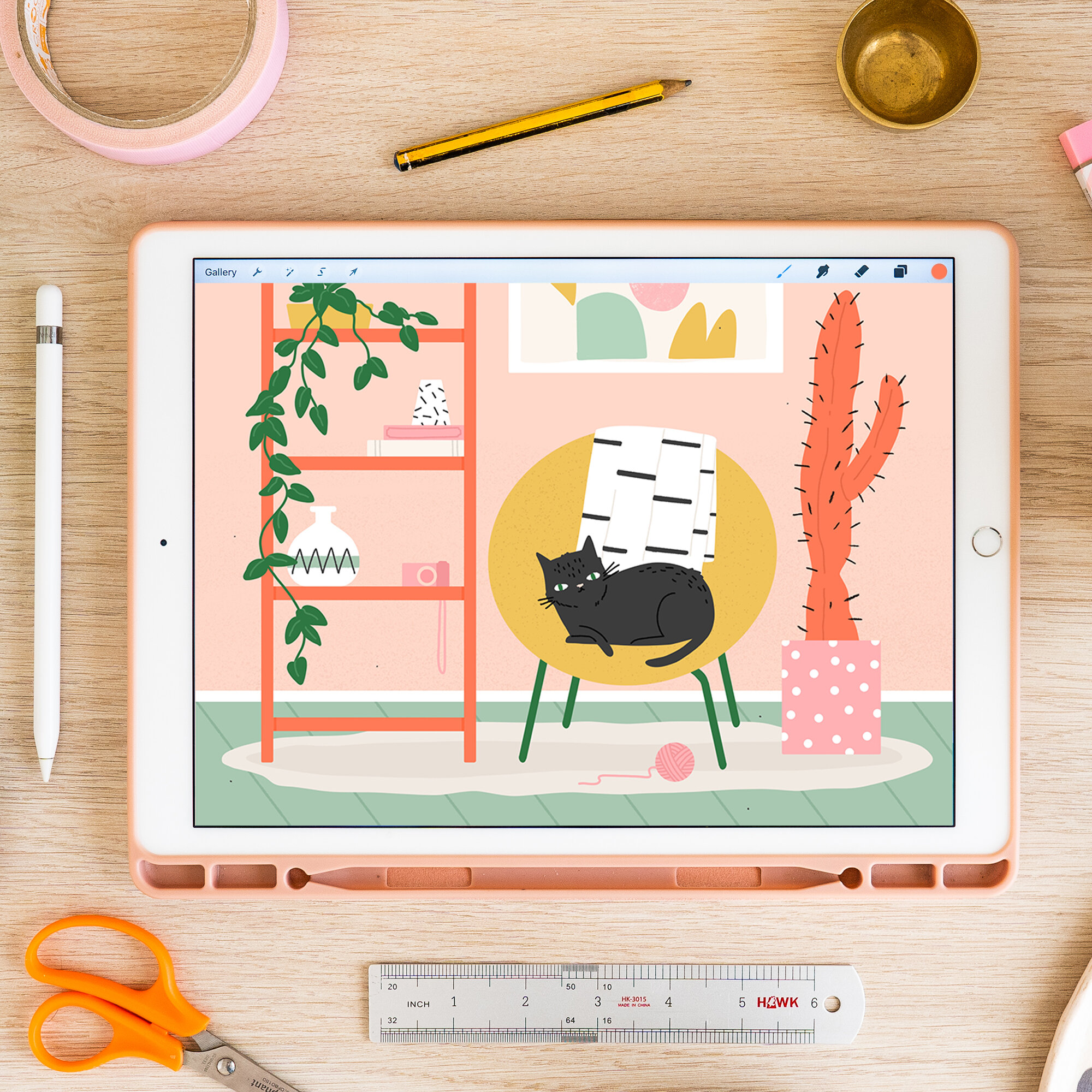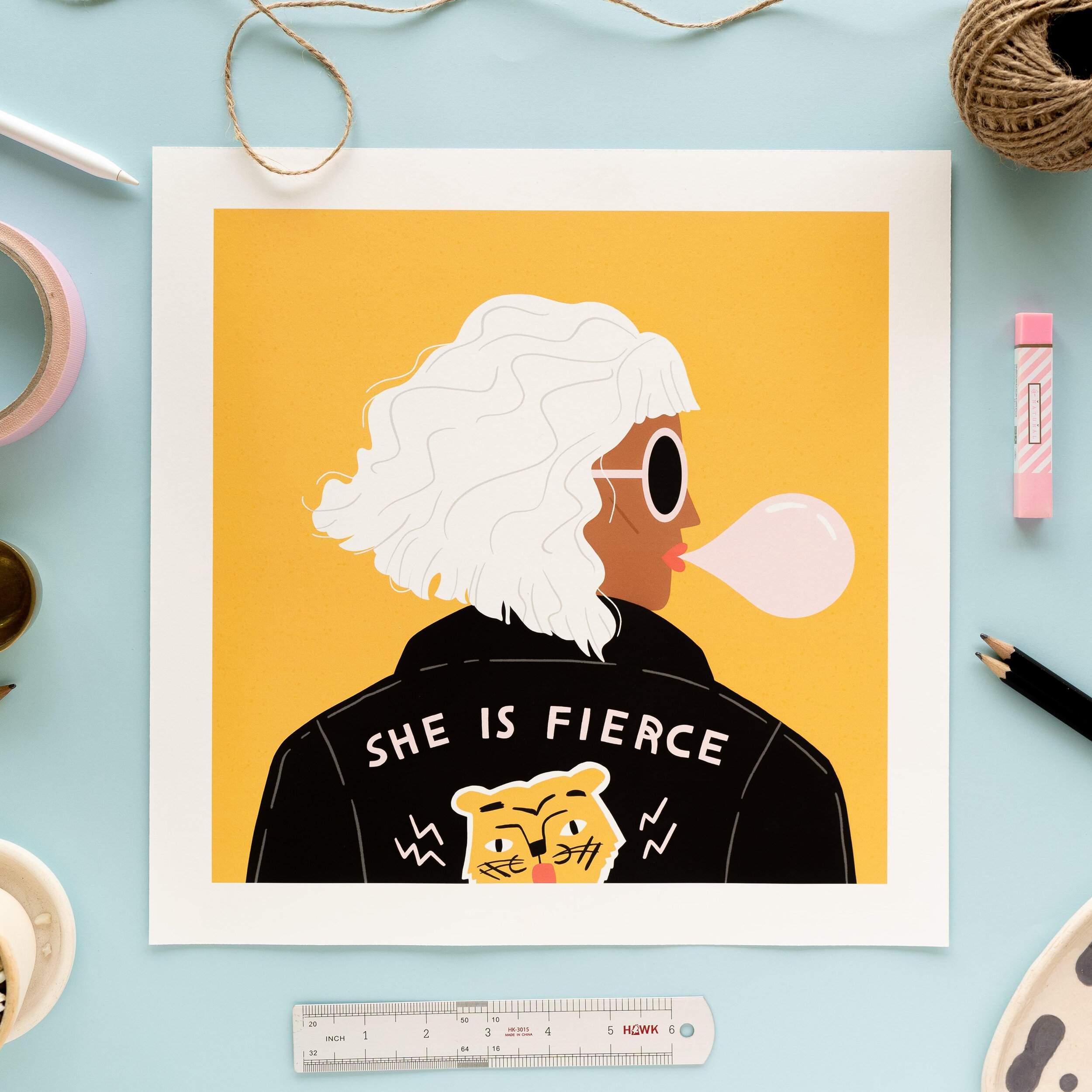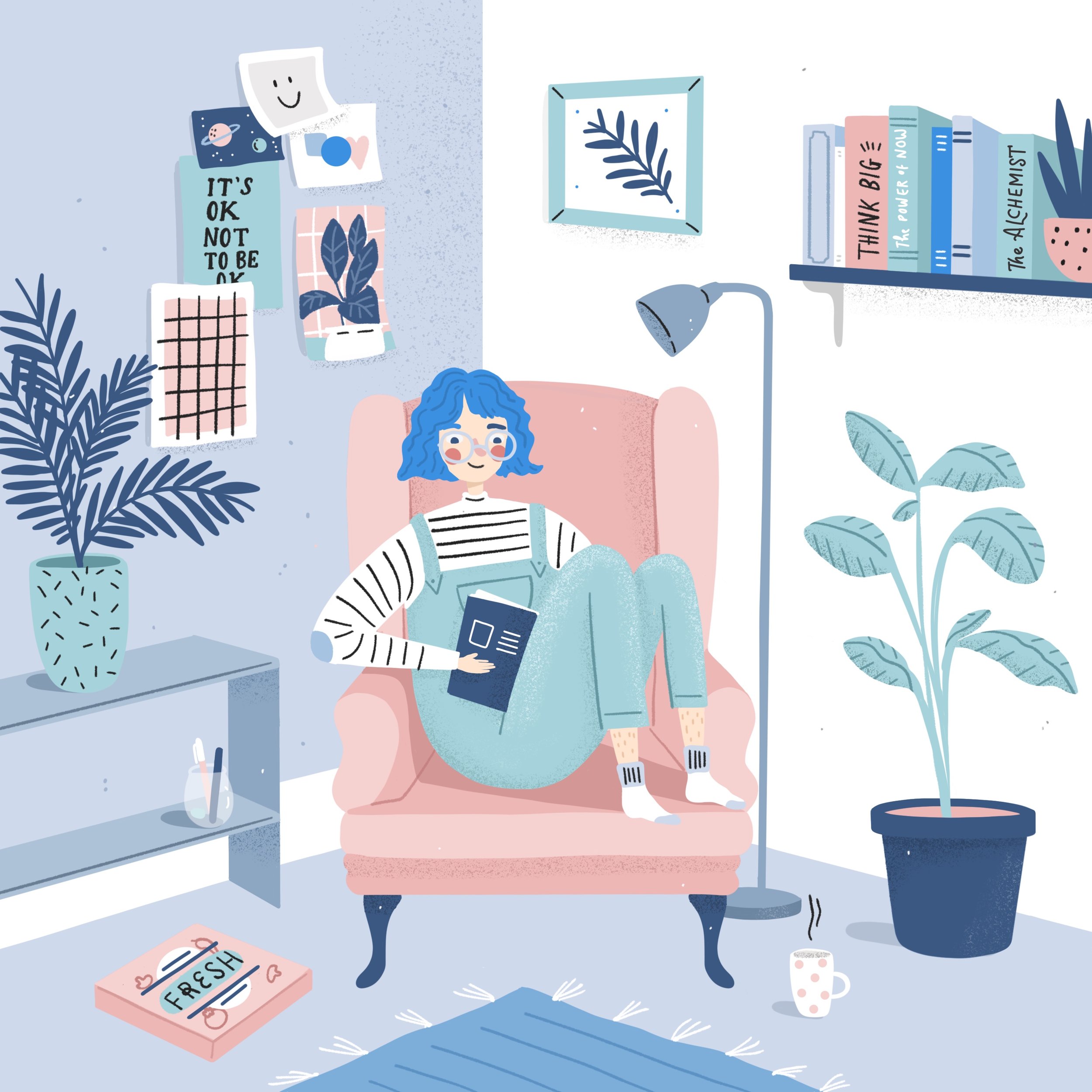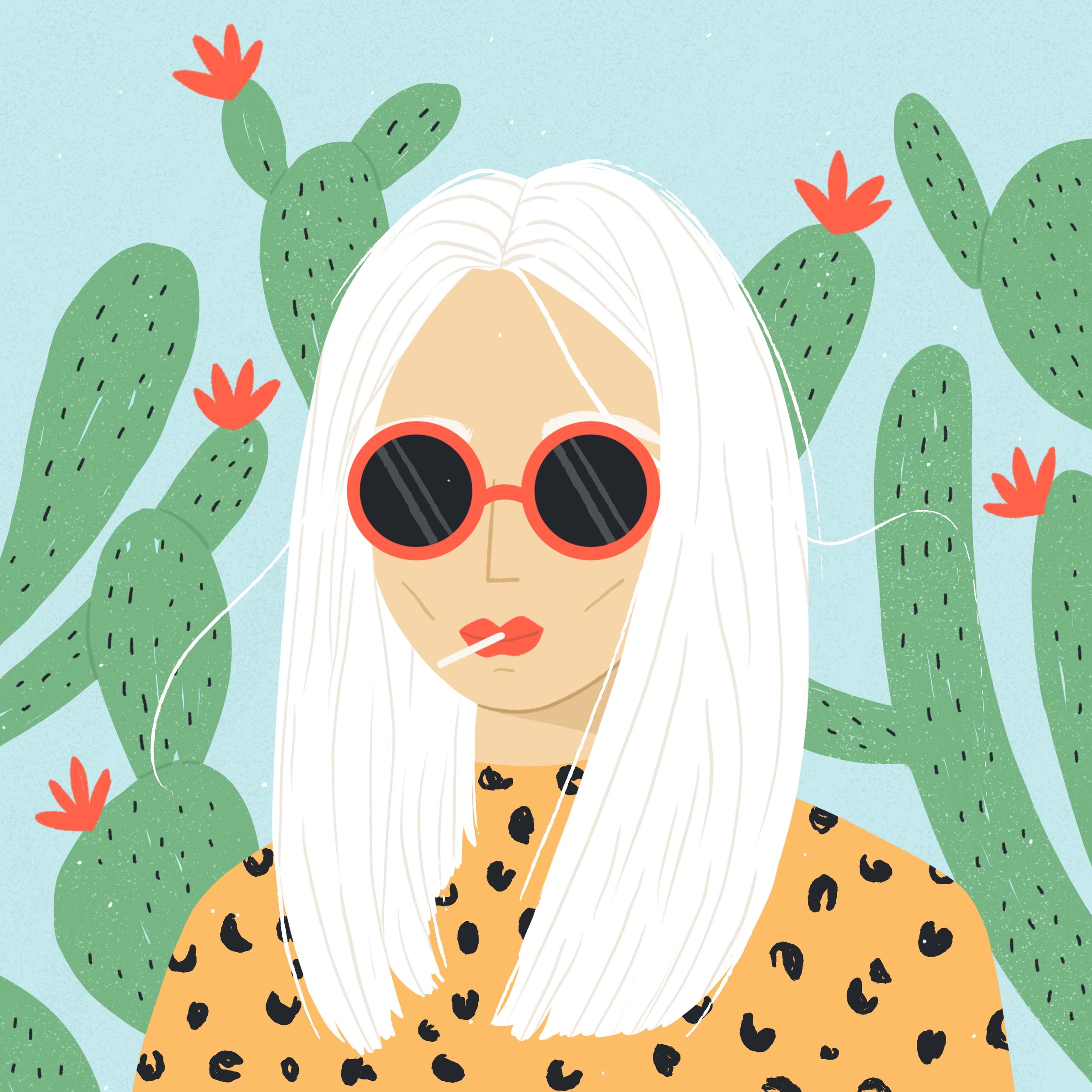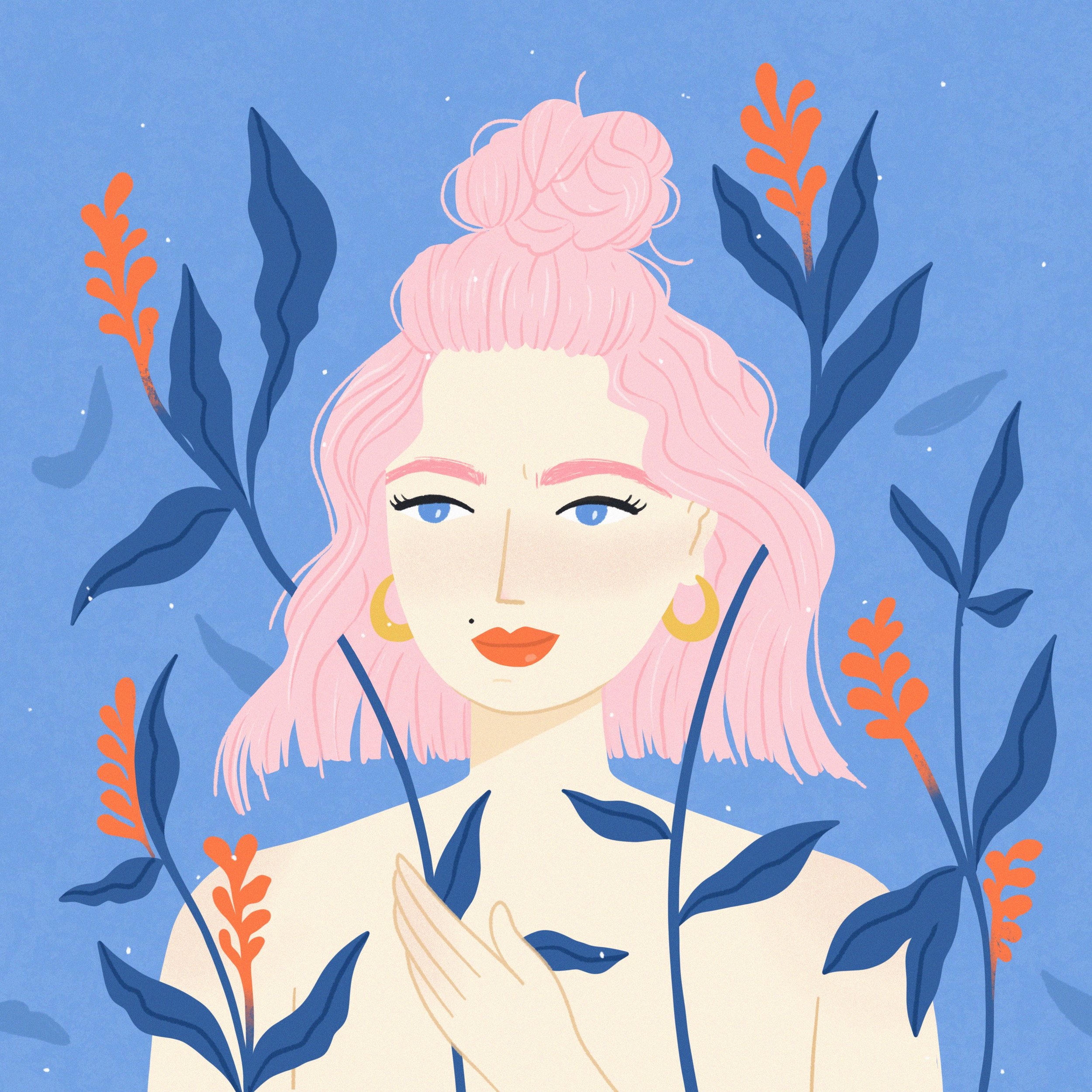Illustrator Charly Clements shares her advice on licensing your work

Charly Clements is a greeting card designer and freelance illustrator traveling the world with only her iPad.
She graduated from Birmingham City University in 2013 with a BA Hons in Visual communication: Illustration and since then has worked with a wide range of clients.
After travelling around South East Asia for a year, and then South America and Europe Charly has set up her studio in Chiang Mai, Thailand.
Last year she launched her first Skillshare class. In the first two months of her class going live, 3,600 students took her class and Charly’s Instagram following grew by 17,000 followers. We talk to her about online teaching, how to make a passive income and what’s next..

Fun with Faces on Skillshare
Can you introduce yourself and tell us about your illustration practice?
I’m a greeting card designer and freelance illustrator with a love for teaching others. I’ve been specialising in greeting cards for about five years now and recently branched out into teaching illustration on Skillshare. My work mainly consists of bright colours, quirky patterns and stylised portraits that I sell through POD sites and license out to companies. I graduated in 2013 and in 2016 I finally made the leap into full time illustration. I bought an iPad Pro, sold all my belongings and started travelling around Asia, and I haven’t looked back since! Since then I’ve lived in 15 different cities, selling my illustrations online. It’s been such an adventure!
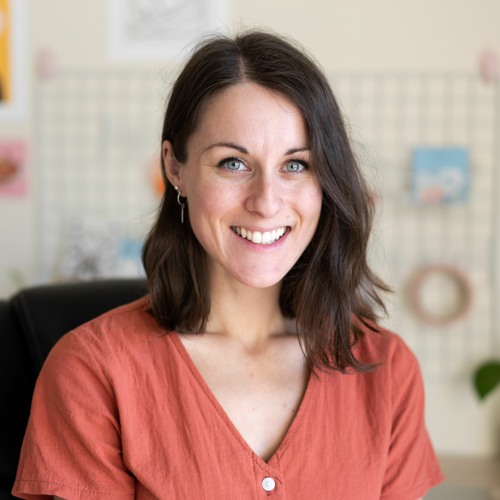
Illustrator and greeting card designer Charly Clements is currently based in Chiang-Mai, Thailand
How did you go from working part time to full time? What had changed financially to help you make that transition?
After graduating in the UK I moved to Berlin to start a new life, I was working three part time jobs, and working on my creative business in the evenings selling my own products on Etsy. About a year into that I was approached by a greeting card company asking about licensing my work to get it stocked in shops like Urban Outfitters and Sainsburys, it was a dream come true! I decided to focus all of my time and energy into this, and stopped printing and packaging my own products; instead I sent my illustrations directly to the licensing company who would fulfil the order for me, this meant I didn’t need to physically print products anymore.
I was still working at a bilingual school and juggling quite a few babysitting jobs – these jobs gave me the financial cushion I needed whilst I was building up my passive income streams through licensing and Print on Demand sites. Over time the success from these sites meant I could slowly wean myself off my part time jobs and when the time was right I sold everything, and went travelling – continuing to work on my creative business from my iPad.
Licensing is quite a slow burner in the beginning but you have to trust the process. I think within about six months I started receiving a really good wage – at one point I had a payment of £3k in one month from one of my licensees which was incredible.

Illustration by Charly Clements
Did you anticipate licensing being as lucrative as it has been for you? It’s an area that still mystifies many illustrators. How many licensees do you work with now?
I had no idea! I always loved the idea of making and selling my own products, which I was doing on Etsy at the time – but I was spending so much time packaging up orders and going to the post office, that I wasn’t able to focus on the creation part which is the part I loved the most. When I got approached by this licensing company it was such a game changer – the profit margins were a lot lower but it gave me so much time freedom to design, and because I was focused 100% on the creation side of things I saw a huge improvement in my work too. I had no idea how lucrative it would become – it’s quite a slow burner in the beginning but you have to trust the process. I think within about six months I started receiving a really good wage – at one point I had a payment of £3k in one month from one of my licensees which was incredible. I tried to work out how many products I’d have to sell myself to make that kind of money in a month, and I think it left me with only a few hours left in the month to actually create! So I felt like I’d definitely made the right decision.

Fun with Faces on Skillshare
I was approached by the first licensor, and they were UK based and they wanted to license my existing designs, the second company approached me for a bespoke range, so this was a worldwide contract, this gave me so much more reach for my work. A bespoke range is a bit more of a risk because your creating new work without an upfront payment, but because I’d had a bit of experience with licensing at that point I just went for it. Sometimes you have to go with your gut, because these risks can definitely end up paying off! That was 4 years ago and I still have a great relationship with both companies.
How does the relationship with the licensee work?
Licensors normally ask for ranges or collections, so it can be a lot of work upfront. It’s important to top up these ranges with new designs every now and then to keep the ranges fresh and exciting. I try to stay on top of trends and topics – as the more current and relatable the greeting cards are, the better they’ll sell. It’s no longer a full time job for me, but in the beginning it was important to invest the time into laying the foundation.

What would you say is your target market? Why did you get into it?
I’d say a similar age to me. I try to create work that I’d like to buy myself which makes it so much easier to know what my customer wants. I started making prints and greeting cards because there wasn’t anything in the market that really appealed to me at the time. There was a lot of fluff, and I wanted to see more humour and realness. I started sending out cards to my friends and family as jokes, and when I posted them on Instagram I noticed a lot of people tagging their friends in them. Being able to create funny, relatable cards has definitely helped get my work out there. Humour is a huge part of my greeting card ranges.
What role does social media play in building your online presence and building a community of followers who are also potential customers? Would you say it has an impact on sales?
Yes, definitely! Social media is a great way to test the waters and anticipate what might sell well; for example if you create an illustration and people share it it not only helps sales but also increases your visibility on Social media. I try to create designs with the hope they’ll tag their friends and then ask; ‘where can I buy this? I need to get it for my friend!’ so the more specific I can be about trying to tap into that market, the more confident I am about making it into a greeting card or product. It’s been a much softer marketing tool and feels more authentic to approach it that way.

I kept receiving messages from my followers asking me questions about my process and I knew I just had to go for it. It was one of those things people kept asking me for and in the end it felt like I was doing people a disservice by not putting it out there.
Can you tell us more about your experience teaching on Skillshare? How did you get into online teaching?
I’ve been a big fan of Skillshare since I was at Uni actually, so quite a long time! I still remember how inspired I felt after watching my first ever class 7 years ago, and it became my dream to create a class that would inspire people the same way. I made a few tutorials on Youtube first, but my imposter syndrome would always stop me from making the leap to teaching on Skillshare.
But as time went on I kept receiving messages from my followers asking me questions about my process and I knew I just had to go for it. It was one of those things people kept asking me for and in the end it felt like I was doing people a disservice by not putting it out there.. so I put my self doubt to one side, and I am so glad I did because teachings been one of the most rewarding jobs in my career.

‘The Moon’ illustration by Charly Clements
I didn’t want the lack of ‘studio space’ to be the hurdle to stop me doing it. I avoided being on screen almost entirely for my first video! I just used an app that records my screen.
Can you go into a bit more detail about the process of putting the first Skillshare video together? How important is it to have a nice studio space to film the videos?
I put off creating a class for a really long time. I’d make excuses like “I don’t have the right equipment” and “I’m too shy to be on camera” but actually I avoided being on screen almost entirely for my first video! I just filmed the screen I was working on. I was in it for maybe 2 minutes at the beginning and a few minutes at the end and that was it. At the time I was traveling, so I didn’t really have a studio to film from. So I didn’t want the lack of ‘studio space’ to stop me doing it.
I use an incredible app called Screenflow that records my screen so if you’re working on an iPad you can sync it to your Mac for example, and then I just added music and my voice over the top.
It really doesn’t have to be complicated or hard. It’s just important that you spend the time creating the class outline first. This makes the production side of things so much easier. Skillshare actually have a great class that takes you through the whole process step by step on how to create your first ever video which I found super useful.

Fun with Faces by Charly Clements
Once the class is ready to go, what happens next? How are classes promoted on their platform?
Once the video is uploaded it has to go through a review process so the team check the quality before it goes live. Every month Skillshare run a 30 day challenge where they guide you through creating your very first class. I remember posting my class with only a few hours to spare, and 2 days later got an email from Skillshare saying I’d won their monthly challenge, as the best newcomer which was awesome! My class Fun With Faces was in all their newsletters and in a lot of their marketing content, and they also put me on the front page of their illustration category – I’m actually still on there now! It’s driven so much traffic to my classes; so it’s definitely worth spending that extra time creating a class that will get their attention. Since then they’ve rewarded me with the Top Teacher badge, which has given me lifetime access to the platform (If I post at least 1-2 classes a year) so it’s great incentive to keep creating new content!
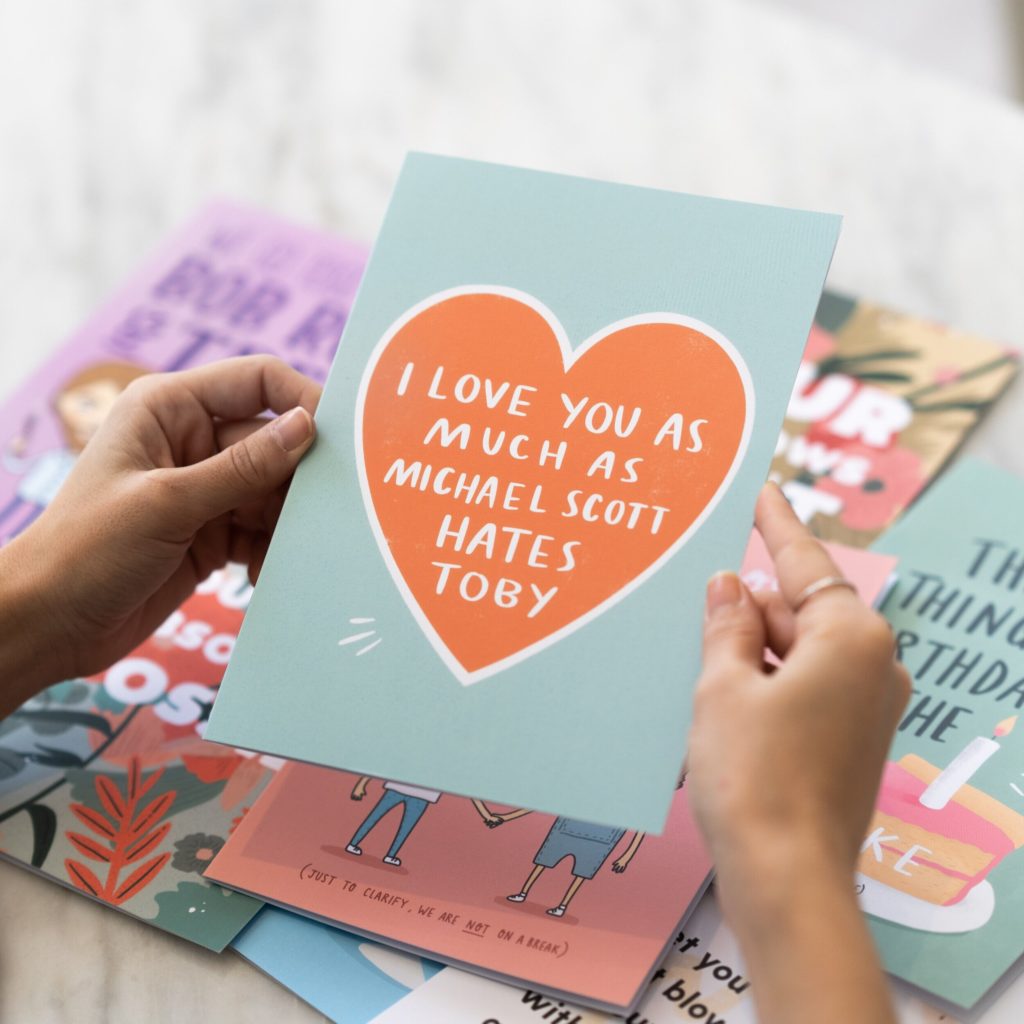
How has the success of your online courses positively influenced your career in other ways?
I think for me the most positive impact it’s had has been on my engagement on social media. It’s not only helped raise my profile as an illustrator but also helped me build an amazing community of incredible illustrators. I think being part of the Skillshare community definitely adds another layer of credibility – it gets my audience really excited. It’s created a real buzz on my social media, and that has become a big part of my brand. This buzz has also attracted dream clients like John Frieda who asked me to create a social media post for International Women’s Day – a lot of my work is celebrating diversity in females, so this was a dream project! I also got to illustrate a book cover for Simon & Schuster Publishers which was so much fun. I don’t normally take on many commissions because I try to focus most of my time creating new work for my POD shops and working on new classes. But sometimes the perfect commission comes along and I just can’t say no!
Create work for you, and the right people will follow eventually. The last year has completely snowballed. I have found my flow and my creative voice, and now I want to inspire others to do the same.

Portrait mini print by Charly Clements
What advice would you give to anyone out there interested in creating a class; what do you think makes a good teacher?
Having a lot of passion and drive! The most common reason people hold back from teaching is because they worry they don’t have anything to teach. So the best advice I can give is that you only need to be one chapter ahead of someone to be able to teach them something new. It could be that small ‘aha moment’ they’ve been waiting for. Maybe they’ve heard it before, but they just needed to hear it from you to make it stick. It’s about having that confidence to go for it, and not being afraid to fail. I put my first class out there without a clue how it was going to go – I just took a risk and it paid off! And my only regret is not doing it sooner!
Final advice for creatives?
Don’t be afraid to put yourself out there! And be patient! I know it can be disheartening in the beginning because it feels like no one is noticing your work – I look back at my old social media posts and for the first four years I was pretty much just talking to myself. But I pushed through this because as long as I was seeing an improvement in my work each day, that was all that mattered.
When you’re first starting out, don’t just rely on one income stream. As creatives It’s really important to diversify our income so we’re not putting all our eggs in one basket. I’d recommend focusing your time on 3-4 areas, and then work your way up from there. It’s a lot of hard work and perseverance at the beginning, but being paid to do something you love every day makes it all worth while!
charlyclements.com | selfmadeartist.co




